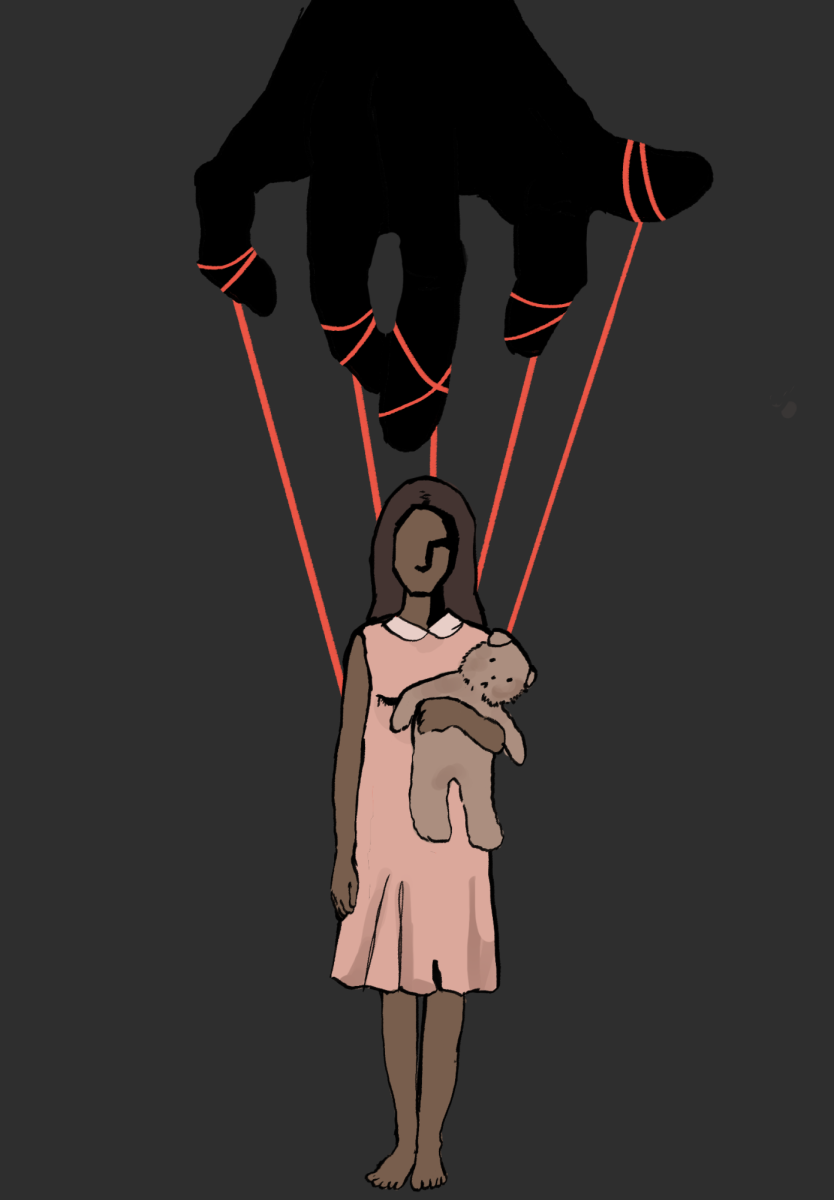Through social media platforms and reality TV, ordinary people are given an outlet to create a window into their lives, vlogging daily activities or having their lifestyle filmed for the world. While this can serve as a vehicle for communication and connection on the internet, sometimes the act of publicizing one’s life quickly becomes menacing.
Amidst the twinkle of rhinestones and the thrill of performing a winning number or acting on stage, there is a troubling reality of child exploitation lurking behind the scenes of some of America’s most controversial beauty pageant and child performance-based television shows. Navigating the intricacies of these glittering spectacles, uncomfortable truths emerge that challenge the essence of childhood innocence in a world where lifelong dreams and nightmares intertwine.
“8 Passengers”
Child exploitation in media is especially prevalent in a myriad of family vlogging channels, where children are featured and sometimes constantly filmed to receive views and subscribers for the account. In the case of “8 Passengers,” a Utah-based family channel established in 2015 and since taken down, the seemingly harmless act of filming a family’s daily lifestyle soon turned malicious, as the channel highlighted abusive and exploitative behavior.
Ruby Franke, the mother and primary individual behind the 8 Passengers account, uploaded frequent lifestyle videos spotlighting her family of six. Amassing over 2.5 million subscribers, Franke offered parenting advice and let viewers into her family’s life. Despite appearing innocent at first glance, the 8 Passengers channel often called attention to personal matters that Franke’s family faced, specifically using information about the Franke children as entertainment for its immense audience.
In many instances, Franke focused on mistakes her children would make, and she then would teach her impressionable, young following how she punished them. These punishments tended to be exceedingly dangerous and even abusive, setting an example for her audience that normalized barbarous and alarming forms of discipline. For example, when Franke’s oldest son pranked his younger brother, she revealed that she kicked her son out of his room for seven months, stripping him of a bed to sleep on. Furthermore, when one of Franke’s daughters repeatedly used scissors throughout the house, Franke filmed herself threatening her child by stating that she would cut the head off of her daughter’s toy until her daughter ceased the undesirable behavior. Franke also routinely threatened to revoke dinner from her children if they misbehaved. In one unnerving video, Franke explained how since her six-year-old daughter forgot to bring her lunch to kindergarten, she would not give her child food, forcing her to stay hungry throughout the day. Franke emphasized that hunger was the “natural consequence” of her child’s mistake.
Through the channel, Franke encouraged formidable forms of punishment among her subscribers. Publicly reprimanding her children as a way to entertain the masses, she disregarded the well-being and safety of her children online.
“Dance Moms”
“Dance Moms” is an example of child exploitation within the realm of reality television. The show, airing from 2011 to 2019, followed the lives of young dancers and their mothers as they navigated the competitive world of dance under the guidance of instructor Abby Lee Miller. While the series aimed to showcase the talent and dedication of these young performers, it often veered into exploitative territory, prioritizing drama and ratings over the well-being of the dancers.
One prominent aspect of exploitation within “Dance Moms” is the relentless pressure placed on the young dancers to achieve perfection. Viewers witnessed grueling rehearsal schedules, harsh criticism from Miller and emotional breakdowns from the children. The young girls, ranging between the ages of six to 14 throughout the eight seasons, were required to rehearse until at least 10 p.m. each night, learning new routines to compete each weekend at the competition. Miller put immense pressure on these girls, convincing them they were failures if they did not win first place in every competition. Reports from former cast members have shed light on the toll this pressure took on their mental health, with many experiencing anxiety, depression and other psychological struggles as a result of their time on the show.
The show’s sexualization of its young participants through choreography and costumes added another dimension to the exploitation narrative. Many routines featured suggestive movements and revealing outfits, objectifying the dancers and developing harmful stereotypes about femininity and sexuality.
Furthermore, “Dance Moms” thrived on depicting familial conflicts and drama, often exploiting the relationships between the dancers and their mothers for entertainment. Viewers were subjected to intense arguments and rivalries among the mothers as they competed for their child’s success. This not only exposed the children to unnecessary stress but also normalized toxic behavior and strained relationships within families.
“Toddlers & Tiaras”
“Toddlers & Tiaras” is a controversial, yet comical reality television series that aired on TLC from 2009 to 2016. In the show, attention-hungry parents enter their toddlers into a pageant to win crowns, sashes, titles and cash prizes.
Each episode takes the audience through the journey of pageant preparation, the beautification process, the pageant itself as well as behind-the-scenes drama along the way.
Although the purpose of the show might seem innocent and cute, many issues involving child exploitation have arisen from the perspectives of practical parents. The toddlers on the show live a completely different life compared to most ordinary children who devote the early years of their lives to playing, learning and socializing.
Throughout the nine seasons of the show, all of the pageant moms pressure their young daughters to be perfect as they strut across the stage. These parents are instilling the idea into their children that to be beautiful, they have to wear pounds of makeup, extravagant hairdos and provocative outfits.
Many of the toddlers dance as part of their act. Due to pageant standards and parents’ desires for their toddlers to win, they coach their children to fill their routines with inappropriate poses and choreography, essentially teaching them to act like “grown-ups.”
The exploitation seen in the show mainly comes from the parents of these toddlers looking for their 15 minutes of fame. They are the ones compromising the happiness of their children by teaching them the importance of looking beautiful and entertaining adults. In essence, the parents on the show limit their children’s creative development. They impose harsh beauty standards and the pressure of competition into their lives early on.
This show isn’t only affecting the minds of the toddlers in the pageants, but also the minds of the young kids watching the show. In 2007, the American Psychological Association reported that children’s exposure to over-sexualized media content contributes to negative impacts on their cognitive and emotional development and leads to eating disorders, depression and low self-esteem.
Pageants place toddlers in a negative, stress-inducing environment. After numerous controversies and complaints from parents about the inappropriateness of the show, it stopped running in 2016.
Conclusion
The aforementioned reality TV shows and YouTube channels often initially seem innocent, simply entertaining viewers across the world. However, when these forms of entertainment involve children, young kids are often exposed to unreasonable expectations and punishments, while being stripped of their childhoods. As individuals consume copious amounts of media, it is integral to take a look at the creators they idolize and the content they normalize on their platforms.




